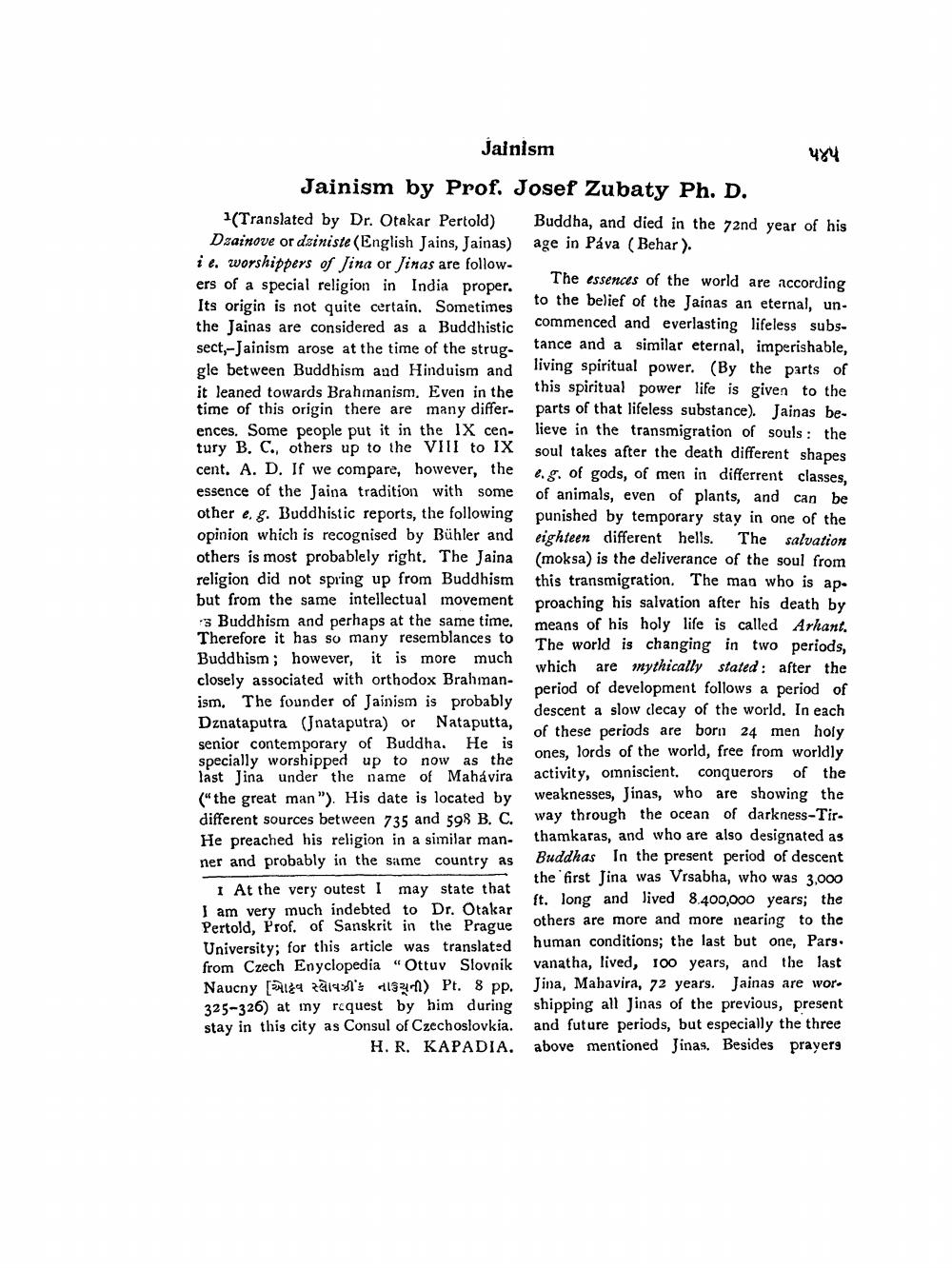________________
Jainism
Jainism by Prof. Josef Zubaty Ph. D.
1(Translated by Dr. Otakar Pertold) Dzainere ordainiste (English Jains, Jainas) ie. worshippers of Jina or Jinas are followers of a special religion in India proper. Its origin is not quite certain. Sometimes the Jainas are considered as a Buddhistic sect,-Jainism arose at the time of the struggle between Buddhism and Hinduism and it leaned towards Brahmanism. Even in the time of this origin there are many differences. Some people put it in the IX century B. C., others up to the VIII to IX cent. A. D. If we compare, however, the essence of the Jaina tradition with some other e. g. Buddhistic reports, the following opinion which is recognised by Bühler and others is most probablely right. The Jaina religion did not spring up from Buddhism but from the same intellectual movement 3 Buddhism and perhaps at the same time. Therefore it has so many resemblances to Buddhism; however, it is more much closely associated with orthodox Brahmanism. The founder of Jainism is probably Dznataputra (Jnataputra) or Nataputta, senior contemporary of Buddha. He is specially worshipped up to now as the last Jina under the name of Mahavira ("the great man"). His date is located by different sources between 735 and 598 B. C. He preached his religion in a similar manner and probably in the same country as
I At the very outest I may state that I am very much indebted to Dr. Otakar Pertold, Prof. of Sanskrit in the Prague University; for this article was translated from Czech Enyclopedia "Ottuv Slovnik Naucny ['s) Pt. 8 pp. 325-326) at my request by him during stay in this city as Consul of Czechoslovkia. H. R. KAPADIA.
૫૪૫
Buddha, and died in the 72nd year of his age in Páva (Behar).
The essences of the world are according to the belief of the Jainas an eternal, uncommenced and everlasting lifeless substance and a similar eternal, imperishable, living spiritual power. (By the parts of this spiritual power life is given to the parts of that lifeless substance). Jainas believe in the transmigration of souls: the soul takes after the death different shapes e.g. of gods, of men in differrent classes, of animals, even of plants, and can be punished by temporary stay in one of the eighteen different hells. The salvation (moksa) is the deliverance of the soul from this transmigration. The man who is ap proaching his salvation after his death by means of his holy life is called Arhant. The world is changing in two periods, which are mythically stated: after the period of development follows a period of descent a slow decay of the world. In each of these periods are born 24 men holy ones, lords of the world, free from worldly activity, omniscient. conquerors of the weaknesses, Jinas, who are showing the way through the ocean of darkness-Tirthamkaras, and who are also designated as Buddhas In the present period of descent the first Jina was Vrsabha, who was 3,000 ft. long and lived 8.400,000 years; the others are more and more nearing to the human conditions; the last but one, Pars. vanatha, lived, 100 years, and the last Jina, Mahavira, 72 years. Jainas are wor shipping all Jinas of the previous, present and future periods, but especially the three above mentioned Jinas. Besides prayers




